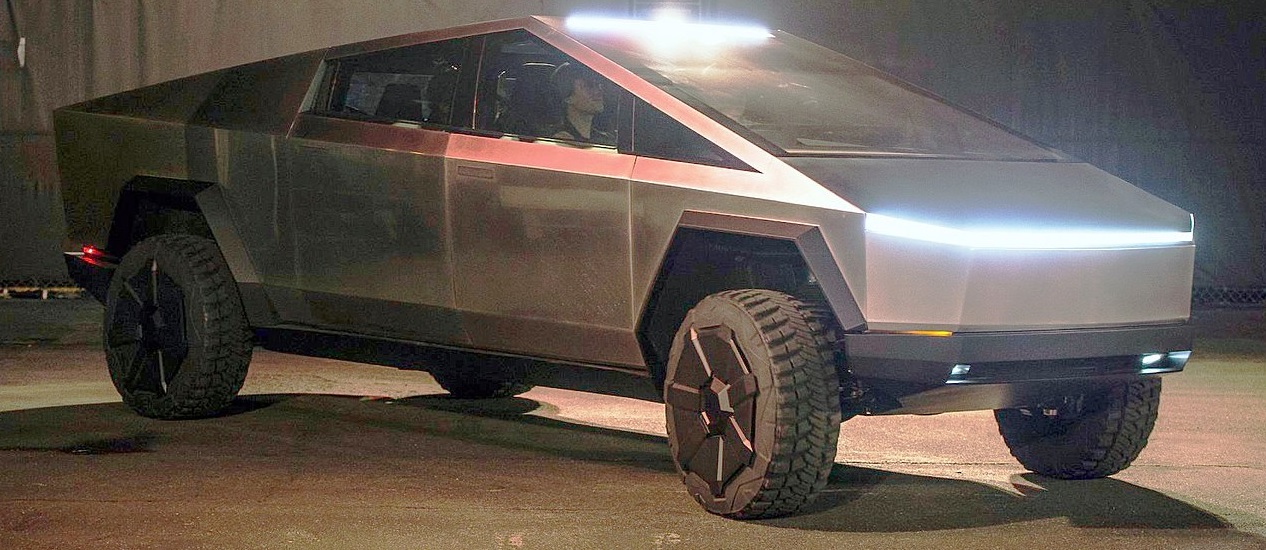Tesla has disclosed details of the Cybertruck in patent applications: In addition to the bulletproof glass, it is about the user interface and the load compartment cover. Tesla has applied for several patents relating to the upcoming Cybertruck, which have now been published.
The vehicle is said to be delivered in late 2021 / early 2022. The patents give an insight into the user interface. Among other things, it is shown how the retractable cover for the load compartment is integrated. There are also details on the bulletproof glass, which became known worldwide due to a spectacular breakdown during the presentation of the pick-up in 2019.
Compared to previous Tesla interfaces, the user interface offers some new features: A patent application shows what happens when a trailer is connected to the trailer coupling or the car moves off-road. The split window view with parallel news and calendar view could also come in other Teslas.
The solar cell-studded cover that protects the cargo area is drawn in electrically and rolled up on a roll deep inside the vehicle . The cover consists of interlocking panels, similar to a roller shutter. However, Tesla chooses a system with rails and rollers to guide the cover, which allegedly can also be equipped with solar cells.
Probably the most interesting patent application is that for durable glass for vehicles. During the live presentation, Tesla wanted to show how stable the windows of the Cybertruck are. Head of design Franz von Holzhausen threw a steel ball against the glass to demonstrate indestructibility. The throw resulted in clearly visible damage to the bulletproof glass. The second attempt had the same effect. Tesla later said the disk was damaged during the dress rehearsal.
The patent application states that the inventor of the glass was engineer Rosie Mottsmith, who actually developed the glass for the Tesla Semi. It is also mentioned that the glass consists of three layers. The outer layer of borosilicate is 2 to 5 mm thick and the inner layer of aluminium silicate is 0.5 mm to 1.1 mm thick. The layer in the middle connects both glasses. The glass sandwich should have a failure probability of no more than 10 percent in the event of an impact of 2 joules. For comparison: The kinetic energy of 6 mm softer plastic balls must not exceed 0.5 joules.
According to the company, prices for the Cybertruck start at $ 39,900 for the base rear-wheel drive model in the United States. The four-wheel drive vehicle is priced at $ 49,900, while the basic three-engine model costs $ 69,900.
